Beavers
What’s in a name? The common name of this large rodent is the American Beaver. This seems odd to those who view it as our national symbol. Yet, American refers to the continent (as distinct from the European Beaver); the scientific name of the American Beaver is Castor canadensis.
The American Beaver is a year-round resident of the Lake; it is our largest rodent. As beavers are primarily nocturnal and there don’t seem to be many of them around the Lake, they are not often seen. Yet, evidence of the beaver’s presence can be found along the lakeshore in the form of gnawed trees and the occasional lodge.
Beavers are thoroughly comfortable in the water and, when seen, are often swimming. Although larger than a muskrat, the two animals can be easily confused when in the water as size is difficult to judge and the distinctive tail is likely below the surface. However, the beaver’s ears are prominent, while the muskrat’s are inconspicuous.
I have been told that beavers are not indigenous to Kootenay Lake. Indeed, when I grew up on the Lake in the 1940s and 50s, there were no beavers to be seen. Now, it is the case that beavers are native to the region, especially in connecting valleys (such as the eponymous Beaver Valley) where the animal finds the gentler streams more conducive than the deep waters and steep creeks of the Lake, itself. But, the Lake has beavers now. Apparently, a population of burrowing beavers was introduced to the Lake sometime in the 1950s, and they stuck. I am attempting to learn more about this.
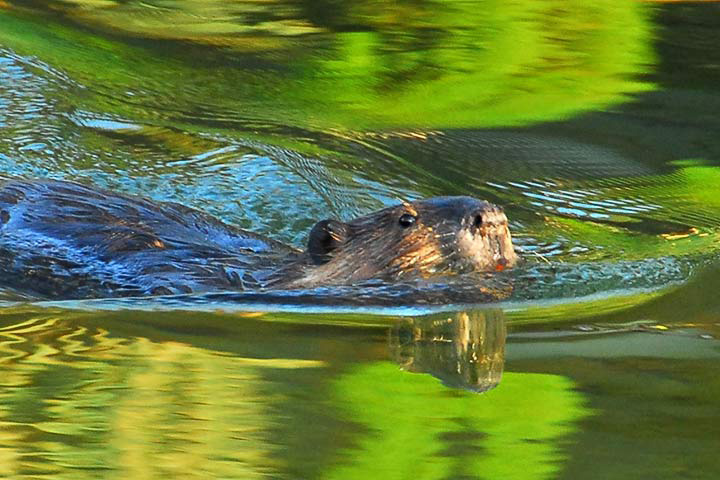 When seen, beavers are often swimming. Their prominent rounded ears distinguish them from the (smaller) muskrat.
When seen, beavers are often swimming. Their prominent rounded ears distinguish them from the (smaller) muskrat.
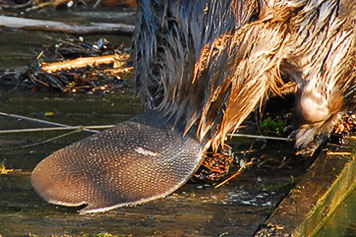 The distinctive, flat, beaver tail is about 25 cm long. The beaver uses it as a rudder when swimming and by slapping the water, as a warning. This particular tail seems to have suffered damage.
The distinctive, flat, beaver tail is about 25 cm long. The beaver uses it as a rudder when swimming and by slapping the water, as a warning. This particular tail seems to have suffered damage.
 With a surprisingly loud crack, the beaver slapped the water with its tail to make this splash. While this activity is said to be used by the beaver as a warning signal, I have seen it done in the absence of any apparent threat; maybe it is proclaiming territory, or maybe it is just fun to do.
With a surprisingly loud crack, the beaver slapped the water with its tail to make this splash. While this activity is said to be used by the beaver as a warning signal, I have seen it done in the absence of any apparent threat; maybe it is proclaiming territory, or maybe it is just fun to do.
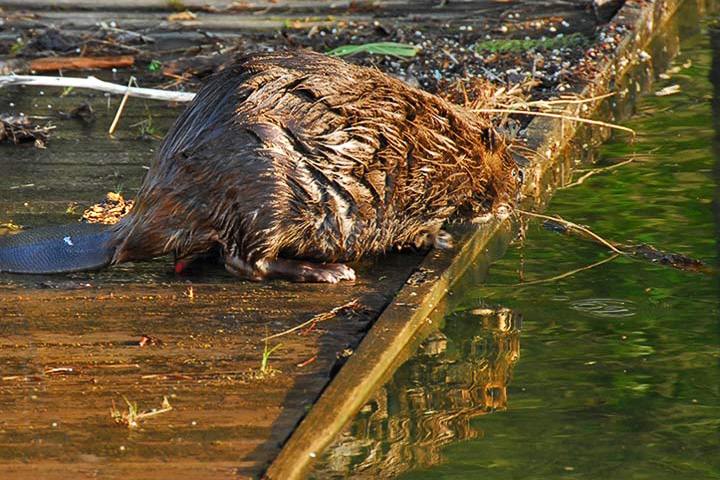 A beaver moves somewhat more awkwardly on land than in the water. Its hind feet are webbed and used to propel it through the water, and the tail is used as a rudder. This beaver almost seems to be looking at its reflection.
A beaver moves somewhat more awkwardly on land than in the water. Its hind feet are webbed and used to propel it through the water, and the tail is used as a rudder. This beaver almost seems to be looking at its reflection.
 This little apple tree was minding its own business when a beaver cut it down, and then just left it without dragging off his prize. Hmm, looks like vandalism to me.
This little apple tree was minding its own business when a beaver cut it down, and then just left it without dragging off his prize. Hmm, looks like vandalism to me.
 This (rather pathetic little) beaver lodge is near the mouth of Kokanee Creek.
This (rather pathetic little) beaver lodge is near the mouth of Kokanee Creek.
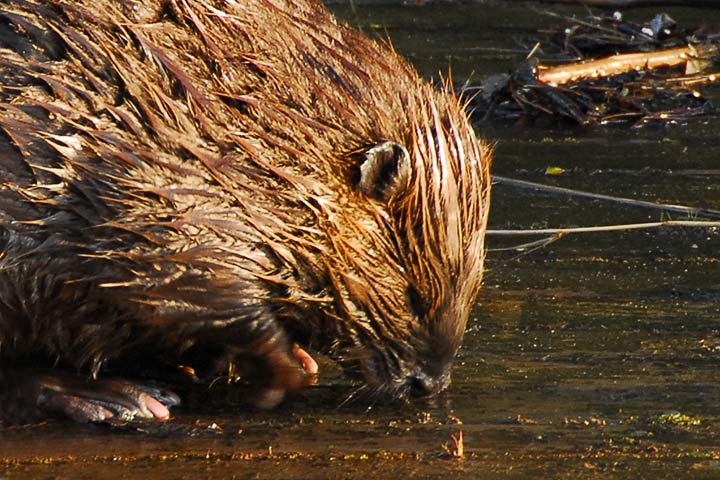 Beavers have poor eyesight, but a keen sense of hearing, smell, and touch.
Beavers have poor eyesight, but a keen sense of hearing, smell, and touch.
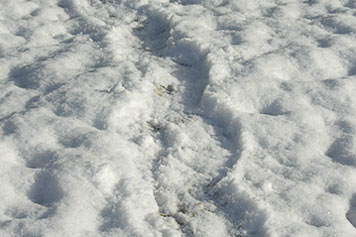 When travelling across land, the beaver often drags its tail, and so obliterates the tracks of its feet. This beaver trail in fresh snow led from the Lake, across the beach and up to some brush. The beaver was travelling from bottom to top and its tail swung from side to side.
When travelling across land, the beaver often drags its tail, and so obliterates the tracks of its feet. This beaver trail in fresh snow led from the Lake, across the beach and up to some brush. The beaver was travelling from bottom to top and its tail swung from side to side.
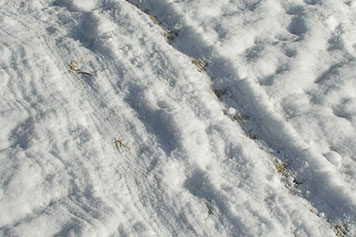 On the return trip to the Lake the beaver moving top to bottom was dragging some brush.
On the return trip to the Lake the beaver moving top to bottom was dragging some brush.
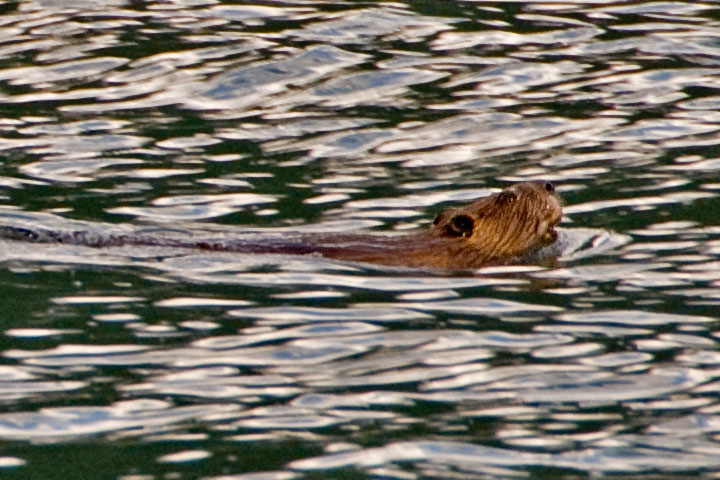 Beavers go foraging daily along the shoreline for fresh bark to eat.
Beavers go foraging daily along the shoreline for fresh bark to eat.
Information from Wikipedia: Beaver.
![]()